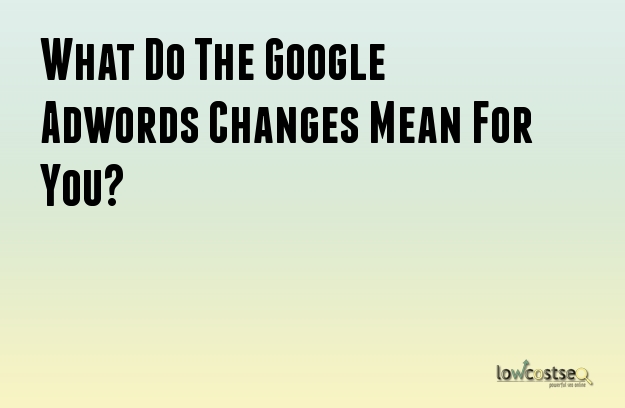
For many online platforms – with e-commerce sites being a key example – PPC campaigns are a vital way to draw in customers. Google Adwords, of course, is the largest and most important of theses, so some of the recent changes can mean a lot to various businesses.
Specifically, Adwords no longer gives the exact figures for search volumes, at least for those that do not pay enough on the service. Google is also rolling out the introduction of campaign groups, which can help collect information in a way that is easier to chart and plan out larger adword strategies.
So, whether you’re a large or small platform, what do these changes mean for you?
Search Volumes
When it comes to any SEO campaign, search volumes are essential. How much a given keyword was searched for, alongside its relevancy to your blog, infographic or – in this case – paid advertisement is the core essence of a keyword’s given value. Without this information, it’s harder to gage the effectiveness or success of any given data.
However, since smaller companies may only get estimates and broad figures, a new approach may need to be given. Google itself now suggests using the forecast tool to identify the right keywords and options for your campaigns. Of course, some people may not wish to rely on predicted data, as opposed to actual data. For the latter, there are plenty of keyword finding tools to generate good leads, so this information is not completely lost. At the very least, it is still easy to identify which anchor texts are worth perusing.
Campaign Groups
Google has recently announced campaign groups in Adsense, allowing larger advertising strategies to compare campaigns based on related objectives. This is highly useful for larger scenarios – a department store, for example, may have various niches, such as home-ware and clothing, yet may also have seasonal sales and promotional campaigns as well. Campaign groups could let such a company monitor like-minded campaigns, subsequently dropping the least effective or investing more in those with effective outcomes.
The best part of this, however, is the ability to set performance targets. This can, in essence, let you view the success or failure of your efforts at a glance. By directly comparing the effectiveness of your results to your intended targets, you can get a quick, efficient overview of what is – and what is not – working.
Shop The Look
Finally, it is also worth discussing one feature that Google is currently testing, even though it is only testing it in the US. Shop The Look is a new feature that links up commercial product pages from images. This way, when users see something they like, Google can try and link to the official product, or find very similar items.
It’s still in early testing, so it’s not quite clear how this works – what metrics does Google use to link up products and image searches? Depending on how this develops, the need for specific SEO strategies may well be required. Yet, on the other hand, it might only be a problem for e-commerce stores.
